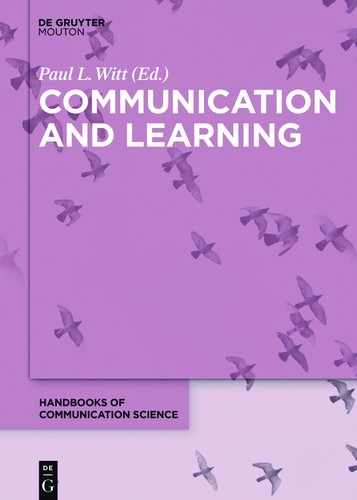Endnotes
| 1 | After the initial review of the 78 issues, we decided to only code those articles that (a) had a clear research (i.e., empirical studies, literature reviews, commentaries/essays) or teaching focus (i.e., instructional practices, commentaries/essays) and (b) were either peer reviewed by the editorial board or invited by the editor. As such, we decided not to code the ERIC RCS reports that appeared in Volumes 25–36, any teaching/learning resource reviews or book reviews that appeared in Volumes 25–56, any editor remarks (e.g., editorial policy, notes to contributors, prefaces to regular or special journals) that appeared in any volume, the Communication Capsules reports that appeared in Volumes 25–27, and the Forums section that appeared in Volumes 31–33. |
| 2 | We note a lack of conceptual clarity between the Frisby and Martin (2010) and the Frisby et al. (2014) reports. The Frisby and Martin 10-item measure was based on a conceptual definition of learning advanced by Ellis (2004) that has four dimensions: recall, knowledge, understanding, and the development of skills. In an apparent inaccuracy, Frisby et al. stated that “the conceptualization used to develop the CLM includes three distinct dimensions of learning (i.e., acquisition, retention, application; Clark, 2002)” (p. 165). Using the same 10 items created by Frisby and Martin, Frisby et al. tested a three-factor model based on the Clark conceptualization. Personal communication with the first author of these studies helped illuminate the researchers’ process, but we are concerned about the lack of clarity in the reporting. Essentially, the second group of authors changed the conceptual definition of the construct but retained the measurement instrument. Further, the rationale for this is not reported in the second study. We encourage researchers working on the development and improvement of measures to be detailed, disciplined, and clear in their explication of the variables under study, as well as their research procedures (cf., Chaffee, 1991). |
| 3 | Loo (Logan & Loo, 1979; Loo, 1991) and communication scholars such as Sawyer and Behnke (1996) have used Howarth’s (1978) mu index = (1 – (Test-Retest Reliability/Coefficient Alpha) as an empirical method of differentiating trait measures from their state counterparts. A cut score on this scale has been established for trait (mu < .375) and state (mu = .375 or greater) measures of speaker anxiety. Based on Beatty’s (1994) report of the stability and internal consistency of the PRCA-24, its mu index represents nearly perfect stability (mu = .14). Sawyer and Behnke (1996) estimated the range of the mu index for the STAI (A-State) as between .384 to .539. |
| 4 | Early laboratory instruments for measuring pressure used vertical glass cylinders containing columns of mercury that were marked-off in millimeter increments. These became the standard for the natural sciences and medicine because they were considered extraordinarily precise for their day. Consequently, since that time the common scale for blood pressure is given in millimeters of mercury or mmHg. |
| 5 | That is, r = .1 is a small effect, r = .3 is a medium effect, and r = .5 is a large effect. |
..................Content has been hidden....................
You can't read the all page of ebook, please click here login for view all page.
